Mad Hedge Biotech and Healthcare Letter
November 12, 2024
Fiat Lux
Featured Trade:
(BONE OF CONTENTION)
(AMGN), (NVO), (LLY), (PFE), (VKTX), (GPCR), (AZN)

Mad Hedge Biotech and Healthcare Letter
November 12, 2024
Fiat Lux
Featured Trade:
(BONE OF CONTENTION)
(AMGN), (NVO), (LLY), (PFE), (VKTX), (GPCR), (AZN)

Mad Hedge Biotech and Healthcare Letter
November 12, 2024
Fiat Lux
Featured Trade:
(MEDTECH’S TRUMP CARD)
(RMD), (STE), (TNDM), (JNJ), (BDX), (MDT), (BSX), (SYK), (ZBH)
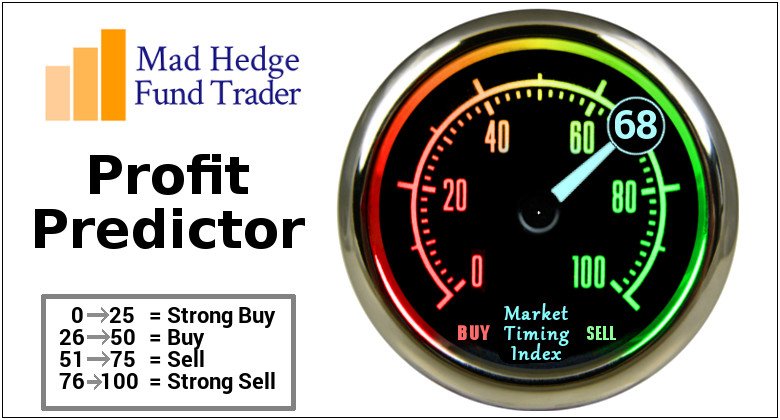
After seeing Trump sweep back into office, my phone's been ringing off the hook with one question: "What happens to my portfolio now?"
Look, I've been around this circus since covering Reagan in the White House press corps, and I can tell you that market hysteria rarely matches reality.
But this time, we need to pay attention - especially in the $567 billion medtech industry that's about to face some serious disruption.
What's different now? Trump's not just talking about those 10% to 20% blanket tariffs anymore - he's dead serious about slapping a potential 60% tariff on Chinese imports.
And after spending years watching supply chains twist themselves into pretzels during COVID, this is going to hit different.
To understand just how big this could be, let's look at what's really at stake here.
In vitro diagnostics makes up 18% of the medtech industry, and cardiology devices are sitting at $75 billion in 2024, expected to hit $95 billion by 2028.
Those aren't just numbers on a page - they represent real money that could take a serious hit. If these tariffs go through, we're looking at a 3.2% hit to S&P 500 earnings per share in 2025.
And it gets worse - add another 1.5% drop if our trading partners decide to play hardball with retaliatory tariffs.
Given all this, where should you put your money? The answer lies in looking at who's already ahead of the curve.
Well, established players like Johnson & Johnson (JNJ) and Becton Dickinson and Co. (BDX) are looking increasingly shrewd with their local-for-local manufacturing strategy.
They might not give you the same adrenaline rush as scaling Mount Everest, but they're solid holds in this environment.
But they’re not the only companies securing their positions. ResMed (RMD), for instance, just posted third-quarter sales up 11% to $1.22 billion, with adjusted earnings jumping 34% to $2.20 per share.
That's not just good numbers - that's a company that knows how to execute regardless of who's in the White House.
In the same vein, Steris deserves attention. Their "front-shoring" strategy in Malaysia isn't just smart - it's prescient. After years of covering Asia for The Economist, I can spot smart positioning when I see it.
Now, let's talk about some of the bigger players in the room. Medtronic (MDT), our industry giant, is giving me pause.
Sure, they're a global leader, but their heavy reliance on Chinese manufacturing and components is about to become a serious headache under these new tariffs.
Same story with Boston Scientific (BSX) - they've got manufacturing facilities in China that could turn from assets to liabilities pretty quickly.
Stryker (SYK) and Zimmer Biomet (ZBH) are in the same boat, but with a twist. Both companies have been smart enough to spread their supply chains globally, but they're still catching enough Chinese exposure to make me nervous.
When those tariffs hit their component costs, watch their margins. This isn't just about bottom lines - it's about how much wiggle room these companies have to absorb higher costs without passing them on to hospitals and patients.
On the flip side, I'm watching companies like Tandem Diabetes Care (TNDM) with growing concern.
Their heavy Asian supply chain exposure under Trump's trade policies is going to be about as comfortable as my MIG-25 flight at 90,000 feet - and trust me, that wasn't comfortable at all.
But, what’s really telling is where the smart money is flowing.
Keep your eyes on three key trends that are reshaping the industry: supply chain resilience, M&A activity (now up 18% to $57.7 billion), and digital transformation.
About 30% of medtech companies are getting serious about digitizing their operations - and they're the ones to watch.
So, here's my bottom line: Trump's return is going to shake up medtech, but not every tremor is an earthquake.
The winners in this new landscape will be companies that have already diversified their manufacturing outside China, built up strong balance sheets to absorb these tariff impacts, and proven they can adapt - like ResMed and Steris have shown us.
The real champions will be those making serious investments in digital transformation. These are the companies that won't just survive Trump's trade policies - they'll thrive under them.
And if you're still holding onto companies with heavy Chinese exposure?
Well, let's just say it might be time to look for higher ground - and I'm speaking as someone who's made that call at both 20,000 feet on Everest and during the 2008 crash.
The medtech industry isn't going anywhere - people will always need medical devices. But which companies thrive under Trump's second term? That's going to depend on who's prepared for the storm and who's still standing in the open.
Now, if you'll excuse me, I've got some vintage wine to open. Making sense of these markets is thirsty work.

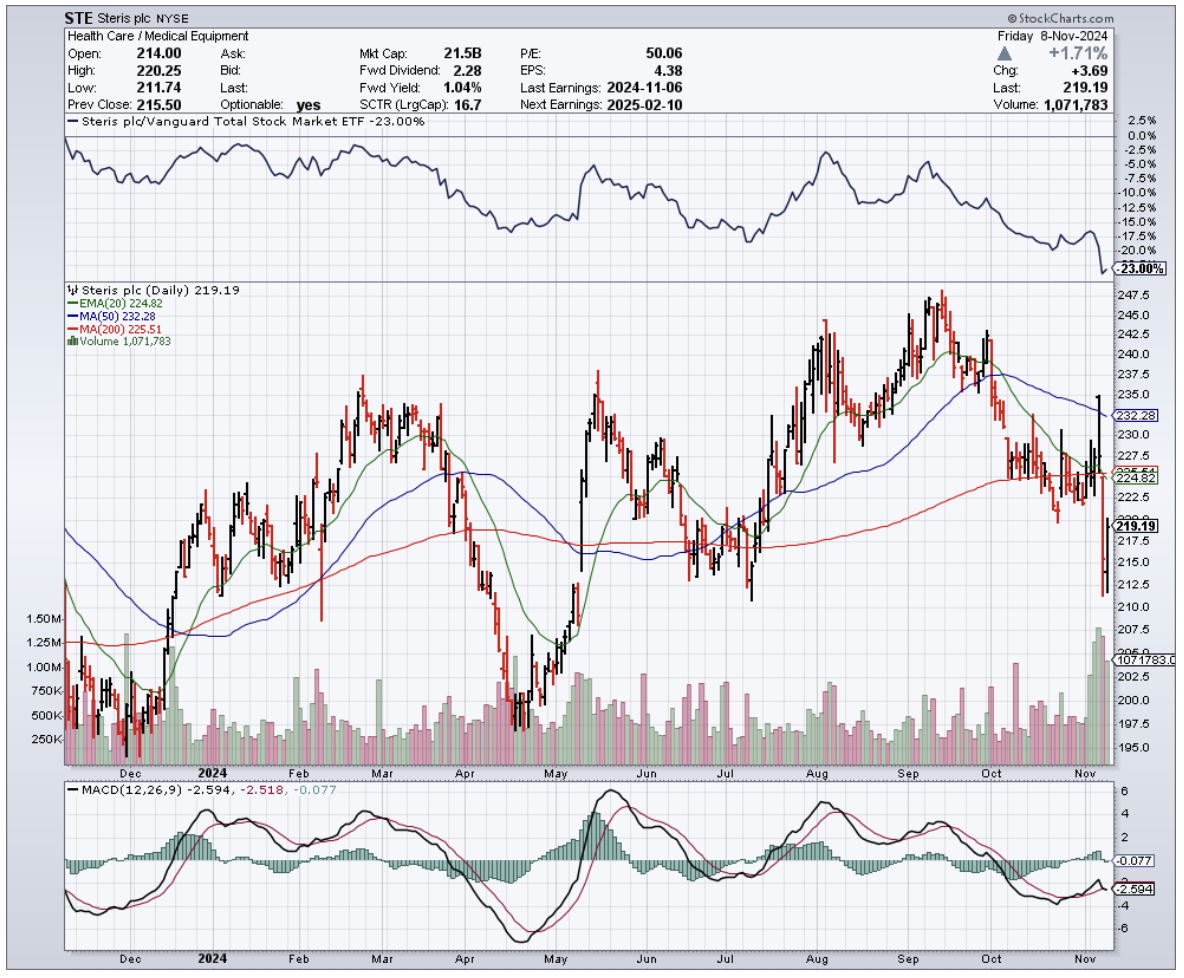
Mad Hedge Biotech and Healthcare Letter
October 22, 2024
Fiat Lux
Featured Trade:
(TICK TALK)
(AAPL), (ABT), (BSX), (MDT), (RMD), (INSP), (DXCM), (PODD)

While waiting two hours to vote at the Incline Village Library this weekend, I counted the number of smartwatches in the line.
Seemed like everyone was checking their heart rates in the cold. One woman's Apple Watch even suggested she sit down after standing too long in the 40-degree weather.
That got me thinking about the billions flowing into medical wearables - and where that money should really be going instead.
Let's start with some sobering numbers about atrial fibrillation (AFib), the crown jewel of smartwatch detection capabilities.
Yes, Apple's (AAPL) 2020 study showed their watches can detect 84% of AFib cases during monitoring sessions. Sounds impressive, until you dig deeper.
Of the 50 million Americans wearing smartwatches, these devices identify only about 5,000 new AFib cases annually - a mere 0.083% of the 6 million Americans affected by the condition.
Plus, the real money tells a different story. The U.S. performs 250,000 ablation procedures yearly, creating a $3.2 billion market growing at 10% annually.
Abbott Laboratories (ABT), Boston Scientific (BSX), and Medtronic (MDT) dominate this space, with combined annual revenues of $12.4 billion from their cardiac rhythm management divisions alone.
Those 5,000 smartwatch-detected cases? They represent just 2% of annual ablation procedures. Not exactly the revolution we've been promised.
The story doesn't improve when we look at sleep apnea detection.
While Apple and Samsung tout their sleep-monitoring capabilities, their watches identify only about 60,000 of the 2 million new sleep apnea cases diagnosed yearly - that's 3% of new diagnoses.
Meanwhile, ResMed (RMD) and Inspire Medical Systems (INSP) generated combined revenues of $4.8 billion last year from sleep apnea treatments.
The smartwatch contribution to their patient pipeline is barely a rounding error.
Still, it’s not like this sector is a complete waste. The global smartwatch market stands at $58 billion and is projected to reach $98 billion by 2027, growing at 10.5% annually. Impressive, until you compare it to the traditional medical device market: $495 billion, reaching $718 billion by 2029.
The cardiac monitoring device segment alone represents $24.5 billion, expanding at 6.9% annually.
More importantly, traditional medical device companies are growing their revenues faster than smartwatch detection is adding to their patient base.
But, like I said, don't write off the sector entirely. The next generation of smartwatches promises some intriguing possibilities.
Continuous blood pressure monitoring could tap into a $23 billion market.
Non-invasive glucose tracking might crack the $28 billion diabetes monitoring space by 2027.
Enhanced sleep diagnostics could open up another $12.8 billion in opportunities.
So what's the smart play here?
Near term, keep your focus on established leaders like Abbott and Medtronic. Their upcoming Q4 earnings reports will tell us more about traditional patient acquisition trends than any smartwatch sales figures.
Watch for FDA clearances too - Abbott's new cardiac mapping system, expected in Q1 2025, could be a game-changer.
Looking out 12-24 months, keep your eye on companies like Dexcom (DXCM) and Insulet (PODD) as glucose monitoring moves mainstream.
ResMed's new sleep diagnostic platforms, launching mid-2025, could redefine how we think about sleep medicine.
Meanwhile, Boston Scientific's push into AI-enhanced cardiac monitoring might just bridge the gap between consumer tech and serious medical devices.
For long-term thinkers, watch for companies developing hybrid solutions that combine traditional devices with consumer tech.
The real breakthrough will come when medical device makers start acquiring wearable technology companies. That's when you'll know the revolution is real.
Remember, following the patient flow matters more than following the hype flow. Just like timing your visit to avoid a two-hour voting line, timing in the market is everything.
And right now, the time is right for medical device stocks, not their flashier smartwatch cousins.
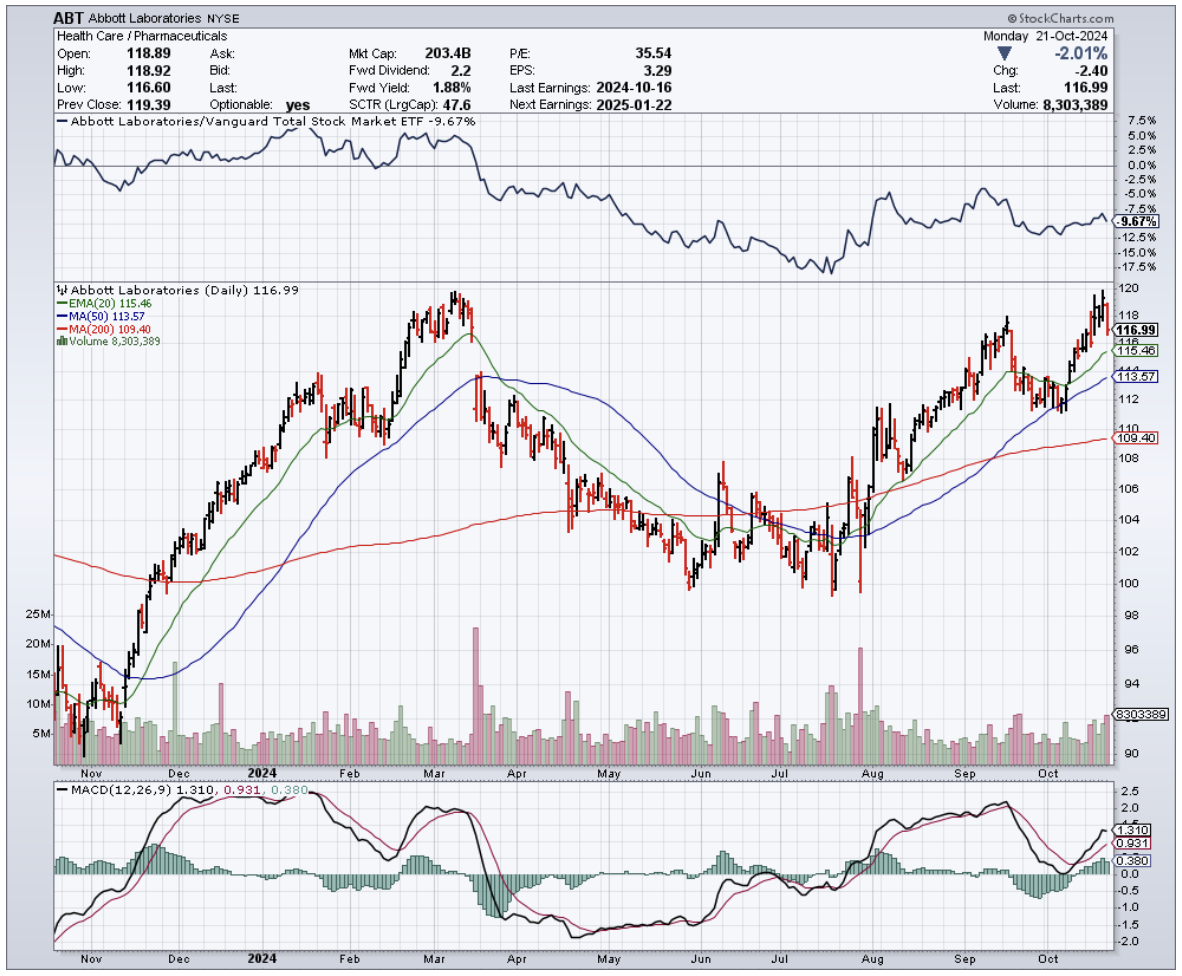
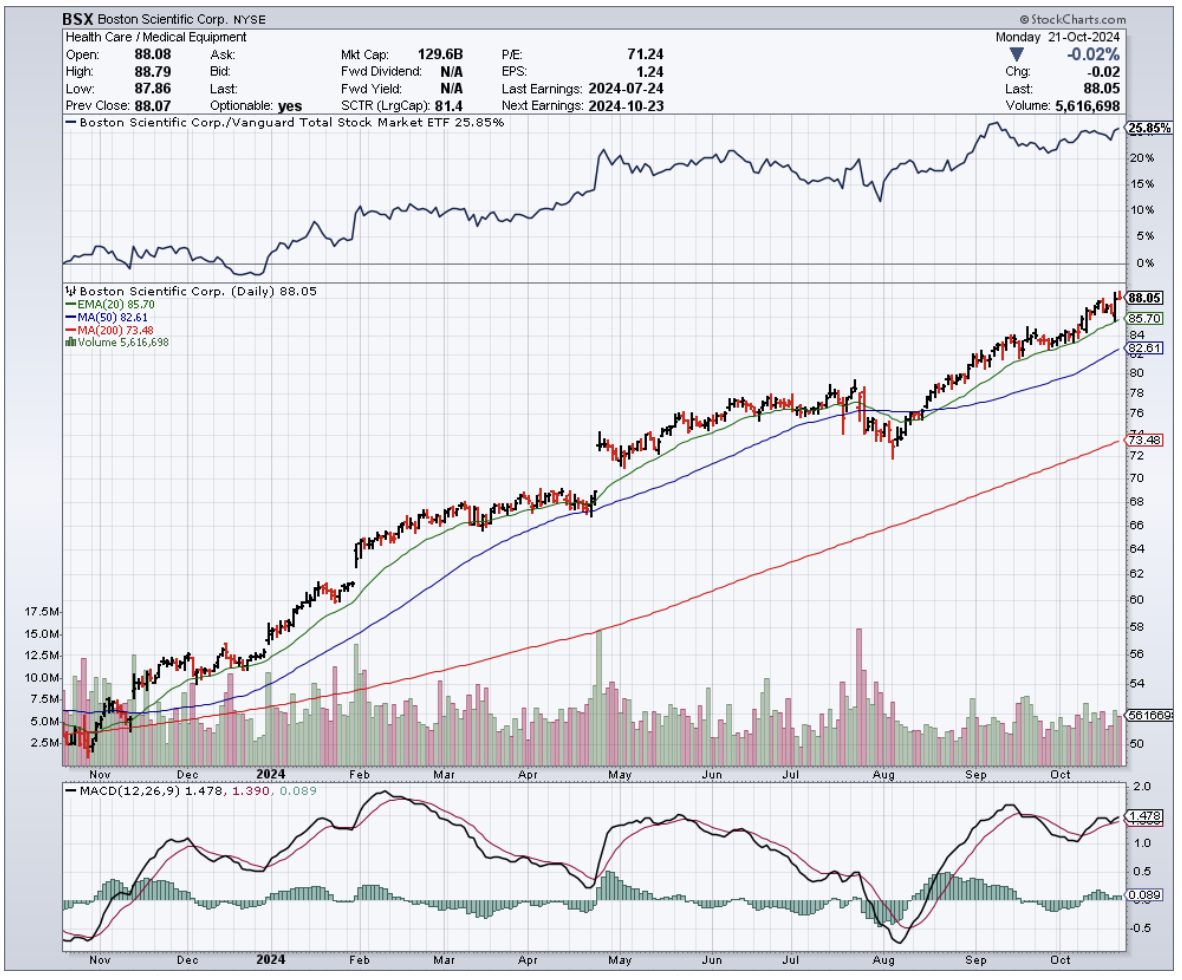
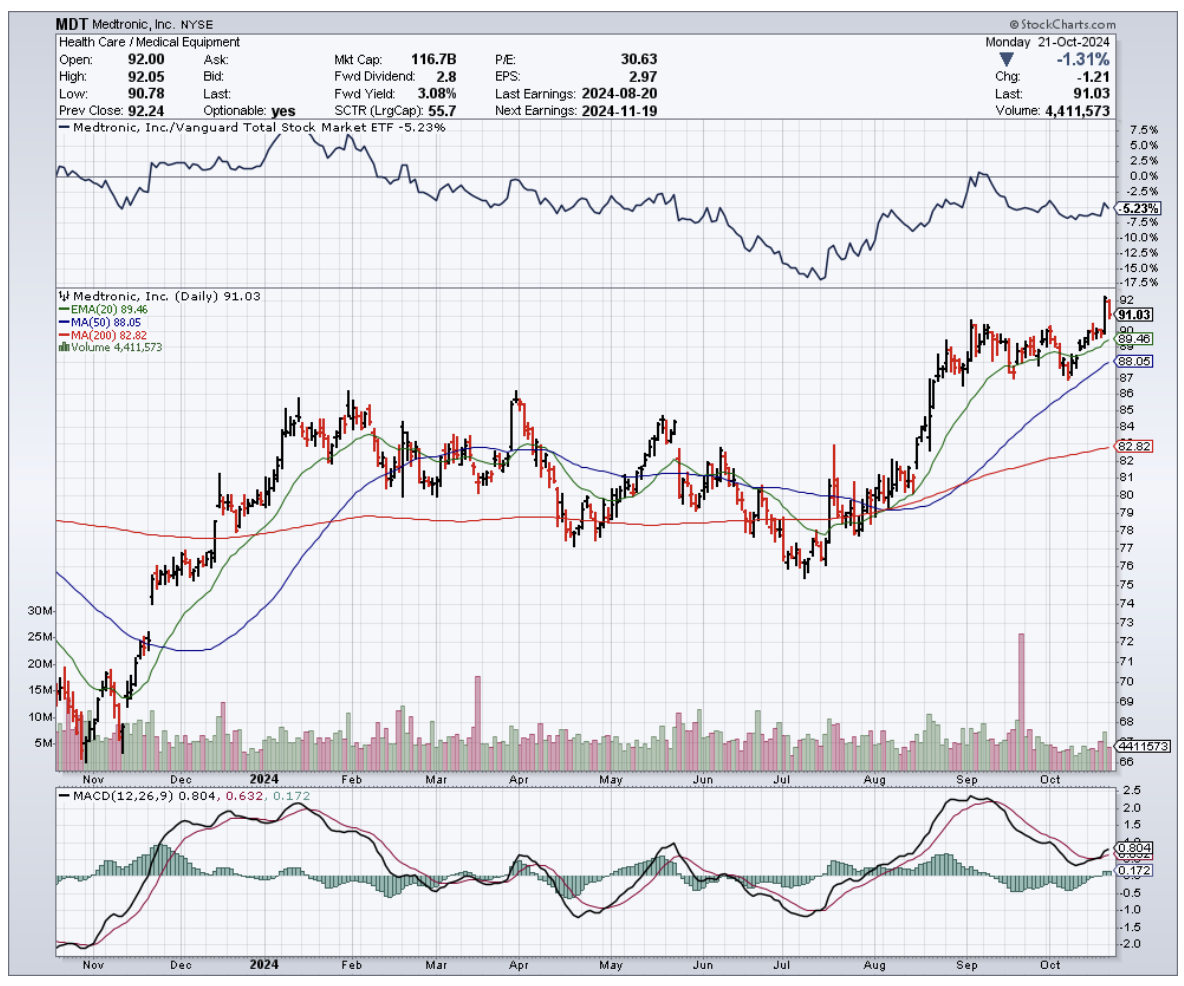
Mad Hedge Biotech and Healthcare Letter
February 29, 2024
Fiat Lux
Featured Trade:
(A LEAN, MEAN, HEALTHCARE MACHINE)
(MDT)

I admit that predicting where the S&P 500 will land in the next six months is a bit like guessing the next flavor of the month at your local ice cream shop — exciting but wildly unpredictable.
However, history has shown us that over a decade, it's more like betting on the sun rising in the east — pretty darn reliable for those looking to fatten their wallets.
Now, I'm not suggesting you throw your hard-earned cash at just any company that pops up in your stock app. No sir, we’re here for the smart picks.
And who's on my radar today? None other than Medtronic (MDT).
Let’s talk about why this healthcare giant could be the golden goose of your investment portfolio for the next decade.
Imagine a company that’s pretty much the Swiss Army knife of the medical device world, simplifying the lives of patients in 150 countries and tackling over 70 health conditions. Sounds like a dream, right? That’s Medtronic for you.
Sadly, it hasn’t been all sunshine and rainbows for this medical device company. Recently, Medtronic's growth has been more sluggish than a snail on a leisurely stroll, with revenues dipping ever so slightly in the latest fiscal year.
Blame it on COVID-19, people dodging doctor visits, or supply chain snafus; the healthcare sector has been through the wringer.
But, just when you thought it was all doom and gloom, Medtronic surprises everyone with a 4.7% revenue bump in its latest quarter.
With new gizmos and gadgets rolling out and an aging population that’s only going to need more medical attention, Medtronic is poised for a comeback.
Looking at the company’s trajectory and portfolio, I’m inclined to agree with optimists singing tunes of a 5.9% compound annual growth rate for the global medical device market till the decade's end. Considering that Medtronic is positioned in front of this segment, it doesn’t take much convincing that this stock is set for growth in the next years.
That’s not all though. Medtronic is trimming the fat by saying sayonara to its ventilator business, embracing a leaner, meaner approach.
Specifically, it plans to merge the remaining gems of its patient monitoring and respiratory interventions segment into a dazzling new business unit: acute care and monitoring.
Ultimately, the goal is to beef up organic revenue growth and buff up those financials. As they gracefully exit stage left from the ventilator biz, any lingering revenue from these machines will play a cameo in the “other” section of its financials, starting next quarter.
And let’s talk numbers for additional context, because who doesn’t love a good success story?
Over the last three quarters, Medtronic has been strutting its stuff with earnings just north of $3 billion on a revenue runway of $23.8 billion, flaunting a profit margin of 12.6%.
Not too bad, right? Still, there’s room to grow those figures, and a beefier profit margin means a happier ending for investors, with the stock potentially hitting new highs.
Can Medtronic truly follow through with a growth story? Well, its history says yes.
Medtronic's revenue has ballooned by 88% over the last decade, a feat that's as impressive as fitting into your high school jeans.
A significant chunk of this growth spurt came from its $42.9 billion acquisition of Covidien in 2015, which did more than just add a few zeros to its balance sheet — it catapulted Medtronic’s product portfolio and European presence into the stratosphere.
After that, the company continued to expand through a series of mergers, acquisitions, and good old-fashioned organic growth.
Peering into the crystal ball, there’s a strong potential that Medtronic will keep the growth party going at a steady clip of 4% annually in the medium term.
Let’s also not forget about dividends. Medtronic is the kind of company that keeps the dividend party going, having increased its payout for an impressive 45 years. Despite a modest bump this year, the future looks bright for dividend lovers.
So, should you buy Medtronic stock?
If you’re in it for the long haul, Medtronic seems like it's gearing up for an exciting journey. With a leaner, meaner approach and a market ripe for the taking, Medtronic's future looks bright. I suggest you buy the dip.
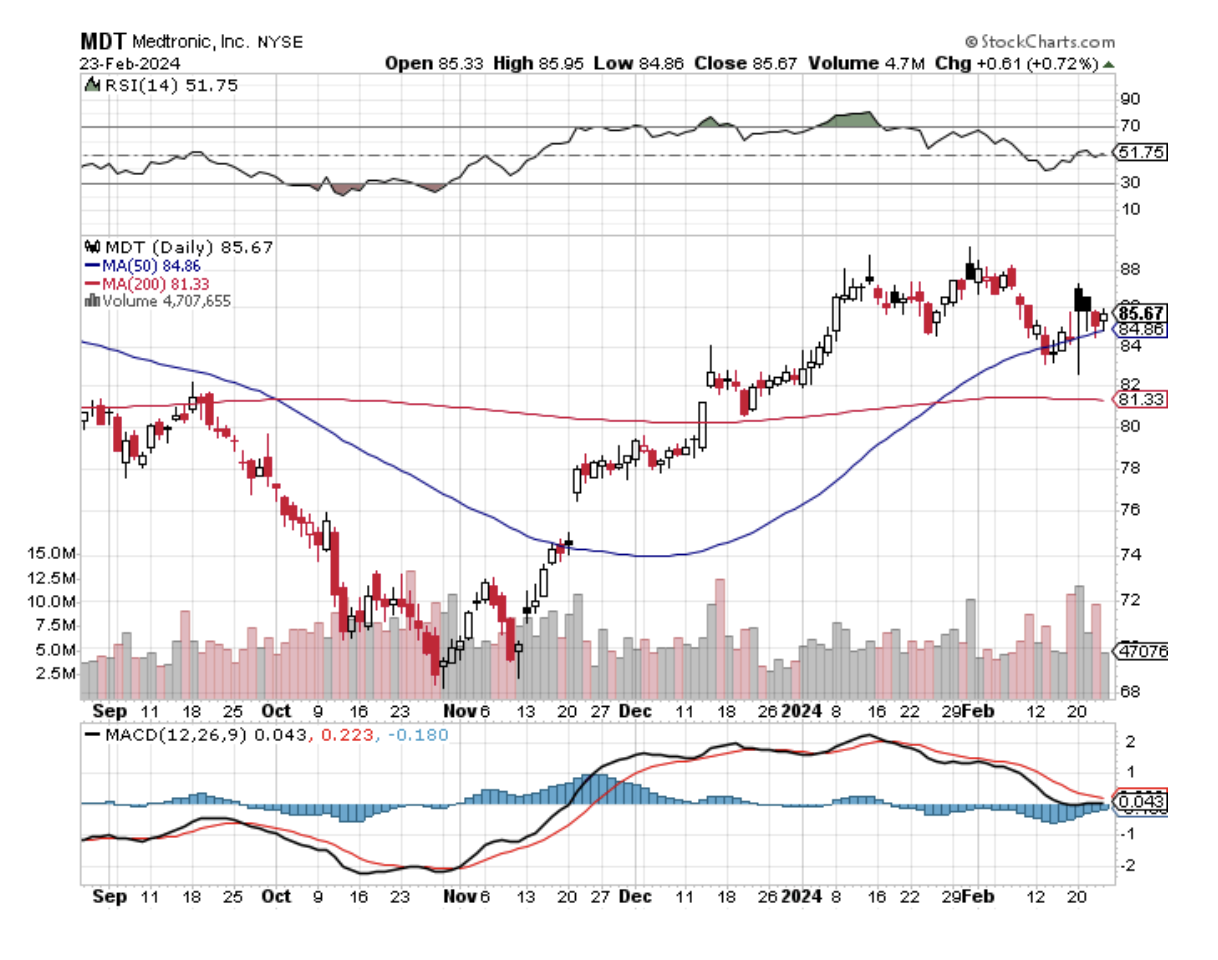
Mad Hedge Biotech and Healthcare Letter
September 21, 2023
Fiat Lux
Featured Trade:
(HEALTH MEETS WEALTH)
(BSX), (ABT), (JNJ), (MDT), (SYK)

In a state-of-the-art medical facility, a surgeon's hands move with precision, guiding a catheter towards the basivertebral nerve. Their mission is clear: to halt the persistent pain signals traveling to the brain, offering relief to those burdened by vertebrogenic pain. This is the real-world application of the Intracept system, a breakthrough in healthcare.
Boston Scientific Corporation (BSX) has recently made headlines by announcing its definitive agreement to acquire Relievant Medsystems, Inc., the very creators of the Intracept Intraosseous Nerve Ablation System. This power move, sealed with a cool $850 million upfront cash payment, also includes some exciting performance-based bonuses over the next three years.
Let's zoom in on the Intracept system for a moment. It's the only kid on the block with a nod from the U.S. Food and Drug Administration, specifically tailored for vertebrogenic pain. This sleek, implant-free outpatient procedure employs radiofrequency energy, acting like a mute button for the pain-causing basivertebral nerve.
And with over 5.3 million Americans wrestling with vertebrogenic pain, the ripple effect of this innovation is monumental. So, mark your calendars: the acquisition is set to be finalized in the first half of 2024 once all the formalities are squared away.
On the financial front, the future's looking bright for Relievant. They're gearing up to clock sales north of $70 million in 2023, with a growth spurt expected to zoom past 50% in 2024. And while the 2024 earnings per share (EPS) might not cause a big splash, 2025 and beyond are looking sunny.
While the acquisition is a major step, Boston Scientific's journey doesn't stop there.
Their Watchman device, which dominates its market segment, is poised to bring transformative changes to atrial fibrillation treatments. Just think of this gadget as a guardian angel for patients with non-valvular atrial fibrillation, shielding them from stroke risks without the ball-and-chain of long-term blood thinners.
Apart from this, Boston Scientific dropped some exciting news earlier this year about their ADVENT Study of the FARAPULSE Pulsed Field Ablation System (PFA). This nifty gadget uses electric fields to treat atrial fibrillation (AF), sidestepping the need to heat up the tissue. The study was a trailblazer, being the first to pit the FARAPULSE system against traditional AF treatments.
However, Boston Scientific's game plan goes beyond just gadgets and gizmos.
Their keen interest in Shockwave (SWAV) and a track record of smart acquisitions hint at a company that's always two steps ahead. This forward-thinking mindset has earned them nods of approval from both the medical community and sharp-eyed investors. The success of its ADVENT study, for instance, has further underscored its growing prominence in the sector.
In today's roller-coaster financial world, with storm clouds of economic downturns gathering, investors are on the hunt for solid ground. This is where Boston Scientific comes through. They're not just a safe harbor; they're also a vessel of growth.
With two solid quarters in the bag and a projected 11% revenue growth on the horizon, they're on a skyward journey. And while there might be some chatter about its share valuation, their blend of innovation and strategy makes every penny worth it.
In a nutshell, Boston Scientific is more than a company name; it's a promise of a brighter, healthier tomorrow. Moreover, the stock has consistently outpaced the broader medical device sector, gaining an edge of about 10% over notable competitors like Abbott (ABT), Johnson & Johnson (JNJ), Medtronic (MDT), and Stryker (SYK). This performance was evident even before the company unveiled the impressive results of its ADVENT study on the Farapulse ablation.
Currently, I remain optimistic about the potential of BSX shares. Granted, a forward revenue multiple of 6.5x isn't exactly modest, and the valuation might appear ambitious when assessed through traditional metrics like discounted free cash flow. However, top-tier growth med-tech stocks rarely come with a discount tag.
Given the prospects of Farapulse, Watchman label extension studies, innovative CRM products, the Agent drug-coated balloon, and growth avenues in peripheral intervention, endoscopy, and urology, Boston Scientific stands out as a unique growth narrative. Historically, investors have shown a willingness to pay premium multiples for such consistent growth in this market segment.
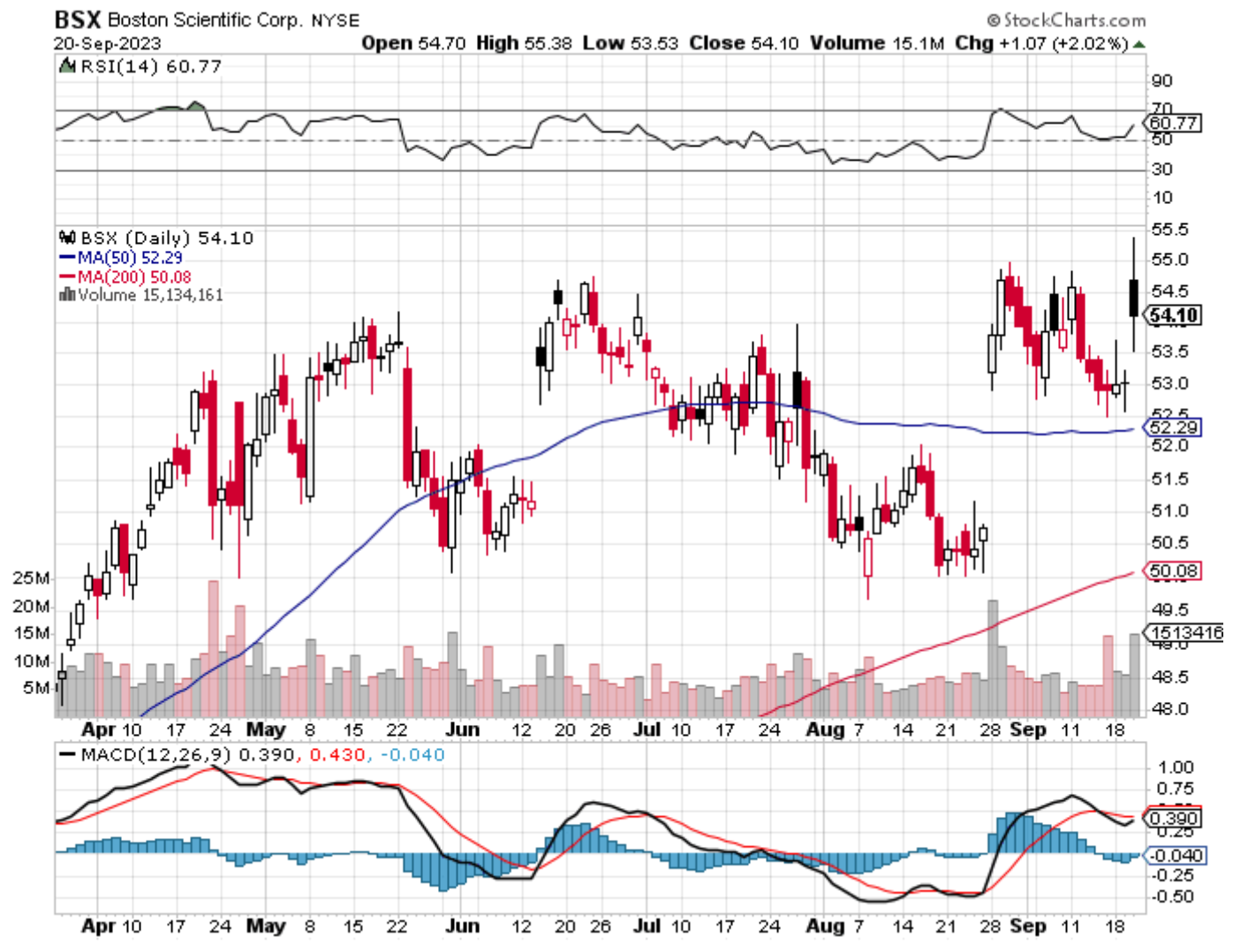
Mad Hedge Biotech and Healthcare Letter
September 14, 2023
Fiat Lux
Featured Trade:
(A PIGGYBACK RIDE TO THE FUTURE)
(BMY), (NVS), (PFE), (MDT), (ABT), (TMO), (HCA), (UHS), (DGX), (LH)

Legal Disclaimer
There is a very high degree of risk involved in trading. Past results are not indicative of future returns. MadHedgeFundTrader.com and all individuals affiliated with this site assume no responsibilities for your trading and investment results. The indicators, strategies, columns, articles and all other features are for educational purposes only and should not be construed as investment advice. Information for futures trading observations are obtained from sources believed to be reliable, but we do not warrant its completeness or accuracy, or warrant any results from the use of the information. Your use of the trading observations is entirely at your own risk and it is your sole responsibility to evaluate the accuracy, completeness and usefulness of the information. You must assess the risk of any trade with your broker and make your own independent decisions regarding any securities mentioned herein. Affiliates of MadHedgeFundTrader.com may have a position or effect transactions in the securities described herein (or options thereon) and/or otherwise employ trading strategies that may be consistent or inconsistent with the provided strategies.
This site uses cookies. By continuing to browse the site, you are agreeing to our use of cookies.
OKLearn moreWe may request cookies to be set on your device. We use cookies to let us know when you visit our websites, how you interact with us, to enrich your user experience, and to customize your relationship with our website.
Click on the different category headings to find out more. You can also change some of your preferences. Note that blocking some types of cookies may impact your experience on our websites and the services we are able to offer.
These cookies are strictly necessary to provide you with services available through our website and to use some of its features.
Because these cookies are strictly necessary to deliver the website, refuseing them will have impact how our site functions. You always can block or delete cookies by changing your browser settings and force blocking all cookies on this website. But this will always prompt you to accept/refuse cookies when revisiting our site.
We fully respect if you want to refuse cookies but to avoid asking you again and again kindly allow us to store a cookie for that. You are free to opt out any time or opt in for other cookies to get a better experience. If you refuse cookies we will remove all set cookies in our domain.
We provide you with a list of stored cookies on your computer in our domain so you can check what we stored. Due to security reasons we are not able to show or modify cookies from other domains. You can check these in your browser security settings.
These cookies collect information that is used either in aggregate form to help us understand how our website is being used or how effective our marketing campaigns are, or to help us customize our website and application for you in order to enhance your experience.
If you do not want that we track your visist to our site you can disable tracking in your browser here:
We also use different external services like Google Webfonts, Google Maps, and external Video providers. Since these providers may collect personal data like your IP address we allow you to block them here. Please be aware that this might heavily reduce the functionality and appearance of our site. Changes will take effect once you reload the page.
Google Webfont Settings:
Google Map Settings:
Vimeo and Youtube video embeds:
